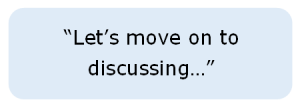What are listening and lecture cues?

This is the first of four chapter about Listening for Lecture Cues. To complete this reader, read each chapter carefully and then unlock and complete our materials to check your understanding.
– Introduce the concept of listening and lecture cues
– Explore how lecture cues are best categorised
– Outline four verbal and non-verbal lecture-cue types
Before you begin reading...
-
video and audio texts
-
knowledge checks and quizzes
-
skills practices, tasks and assignments
Chapter 1
Lectures and extended presentations, as daily occurrences in many academic settings, can be one of the most challenging aspects of university life for non-native speakers of English. It’s not enough for a student to simply sit and listen and hope that with sufficient exposure their listening skills will improve; a good listener knows to prepare before the listening activity, works to maintain and maximise engagement throughout the listening, and reviews (and attempts to expand) their understanding of the content after the listening event is finished. One important aspect of being successful in this area is the ability to recognise and understand listening and lecture cues, as doing so well help you to more easily predict the structure, content and purpose of a lecture or presentation.
What Are Lecture Cues?
The word ‘cue’ traditionally refers to the signal an actor is given when it’s their turn to enter a performance. In the academic context then, a listening and lecture cue refers to a particular word, phrase or action (for non-verbal cues) that functions as a signal intended for the listener. What these words, phrases or actions signal exactly depends on the meaning of those particular items, and there are many different types of phrases to learn which perform many different functions.
In a lecture, such cues could inform the listener of the main ideas that are about to be discussed or provide the order for which these ideas will be given. Such cues could also highlight that the lecturer intends to make a comparison between key ideas, further clarify a topic, or even indicate the transition of moving from one topic to the next. By recognising the particular language that marks these actions, a student can more effectively follow and predict the content of a lecture. And if a listener is able to predict a presentation’s content, then they will probably be better prepared to listen – as they will already be predicting the vocabulary that may be used in that particular style and context.
How Are Lecture Cues Categorised?
Because lecture cues are quite diverse, categorisation of these cues can be somewhat complicated. One easy way of separating them however is to first divide these cue into verbal and non-verbal types. Dealing with the verbal cues first, we can then separate these cues into four fairly distinct categories, all of which are explained in more detail in Chapters 2-4.
1. Organisational Cues
Organisational cues are most useful for following the overall structure of a lecture, and may include examples such as the following:


2. Informative Cues
Such cues are used indicate to the listener when the lecturer is presenting key information. Such cues, as are shown in the examples below, may be used to provide definitions, examples, implications, opinions and sources for evidence:


3. Relational Cues
As well as being used to organise a lecture or inform the listener of a specific concept, listening and lecture cues may also be used to show relations between concepts. Both cause and effect and compare and contrast relations can, for example, be introduced using such cues:


4. Discourse-Marking Cues
The final category of listening and lecture cues, called discourse-marking cues, are used to show more nuanced elements of the presentation, such as the inclusion of emphasis, restatement or divergence:


What are Non-Verbal Lecture Cues?
Much like for verbal cues, it’s also possible to determine four categories of non-verbal listening and lecture cue, two of which are very much relevant to using and improving listening skills and two of which are much more visual.
1. Tone of Voice
In the context of a lecture, the tone of voice refers to whether a presenter is being serious, light-hearted, sarcastic, excited, or a whole number of other emotions and perspectives – all of which may impact on the meaning of a single utterance or the presentation as a whole. It’s therefore useful to pay careful attention not only to the lecturer’s words, but also to the way that lecturer delivers their content in order to determine any subtext. In other words, can you tell if that lecturer is indicating more to the listener than their words alone would suggest?
2. Speaker Fluency
Fluency here refers to the intonation and pacing of the speaker. When a lecturer pauses, they will likely be doing so for an intended effect on the audience. Pauses in English may be used to signal breaks between ideas for example, or be employed to emphasise a particular point. Similarly, a rising intonation at the end of a sentence could indicate that the lecturer is expecting the listener to further consider an idea through the use of a rhetorical question. It’s therefore important to listen for such non-verbal cues to improve your overall understanding of the presentation.
3. Gestures
One non-verbal cue type that isn’t strictly related to listening relates to the gestures that presenters use. Noticing how a lecturer stands or moves their arms, for example, could also help the listener in being able to better predict the overall meaning of an utterance even though they might not strictly understand the majority of the words and content.
4. Facial Expressions
Finally, related to gestures (but much more nuanced and detailed) are the facial expressions which presenters may call upon to transmit additional information to the audience. A single raised eyebrow, emphatic wink, or well-timed smile for example may well inform the listener more effectively than words ever could.
Downloadables
Once you’ve completed all four chapters about listening for lecture cues, you might also wish to download our beginner, intermediate and advanced worksheets to test your progress or print for your students. These professional PDF worksheets can be easily accessed for only a few Academic Marks.
Collect Academic Marks
-
100 Marks for joining
-
25 Marks for daily e-learning
-
100-200 for feedback/testimonials
-
100-500 for referring your colleages/friends